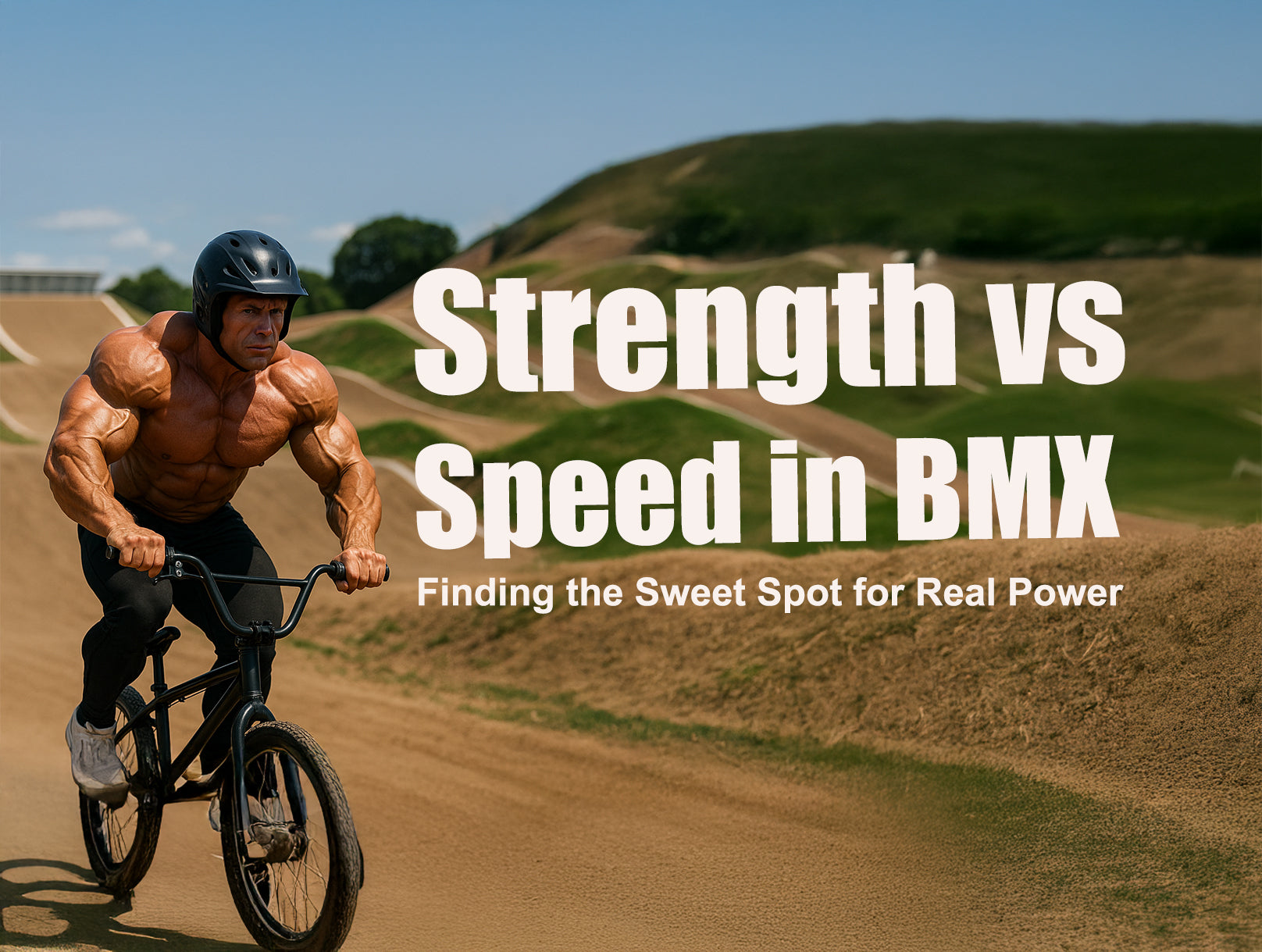You don’t win races with a spreadsheet of PBs, you win them with consistent gates, fast hill times and quick laps. That’s why the job isn’t just to get stronger; it’s to turn that strength into usable speed. Think of your training as a pyramid. Absolute strength is the base: wide, stable and built with heavy, well-positioned lifting. The wider that base, the more potential you have at the pointy end. But potential isn’t performance. You still have to translate it through strength–speed and finally sharpen it as speed–strength, where the movement looks and feels more like race-day!
Absolute strength is your force ceiling. It’s heavy work with slower bar speeds, but the quality matters more than the grind. You’re learning to stay tall and stacked under load, brace cleanly and push hard without folding. This phase builds the hardware-muscle, tendon and connective tissue that can tolerate real work on and off the bike. Including volume work with your heavy exercises is a great way to complement your training. That extra capacity lets you absorb sprint sessions, gates and track nights without the wheels falling off. It’s the unseen infrastructure that makes “fast” repeatable.
After building your solid base, you can then start transitioning into strength–speed, the bridge between raw force and power you can actually use. Here the loads are still meaningful but the intent is faster. The mindset shifts from “survive the weight” to “accelerate it.” This is where accommodating resistance (bands/chains) makes sense because it forces you to drive through the middle of the lift instead of coasting. Positioning stays the same, but the bar path gets snappier and your nervous system learns to apply force at the velocities that matter on a BMX.
Finally, speed–strength is where you sharpen that bridge into race-day output. Lighter loads, higher velocities and faster bar movement teaches you to react quicker, then rebound on contact. Think band-guided jump work and elastic drills, short and repeatable the next day. You’re no longer chasing fatigue; you’re chasing rhythm, speed and power. If absolute strength is the scaffolding and strength–speed is the fit-out, speed–strength is turning the lights on.
All the way through, single-leg work is non-negotiable. BMX is rarely symmetrical. Single-leg patterns keep your pelvis stable, cleans up left–right gaps and make the work feel more “BMXy”. The goal isn’t circus balance tricks; it’s loadable, honest positions you can own: deep control, smooth drive, tall finish.
It’s the blend that matters. Build the base with heavy, well-positioned strength and smart volume, but don’t park all your speed while you do it. Keep a light touch of speed work in the mix (body weight and weighted plyos') so the nervous system stays sharp as the load climbs. Then bridge by moving meaningful weights fast, and sharpen with lighter, high-velocity work. Keep single-leg strength humming in every phase to ensure everything stays activated.
This is the juggling act a good coach can perform, maintaining your strength while speeding up your legs for the next big event. Every coach should understand how the body reacts to different training stimuli, but a great coach will know how your body needs to feel when you get on the gate for the last race of the day.
